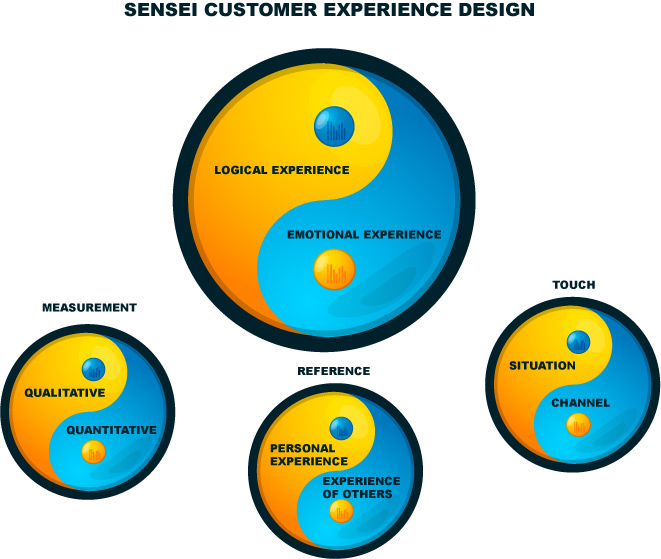I figured I would start out looking into the basics of human behavior online as it forms the basis of understanding for all of the other areas (social experience, customer experience, and demand gen).
The big question is: Do people act differently online than they do in real life?
The answer is yes. Sometimes dramatically different. But why?
The 3 A’s
Since the net began it has offered all people the same thing without prejudice. That thing is Access. Access to content, access to applications (of all varieties) and access to people (like minded or otherwise). Access has broken all of the boundaries people, society and governments have understood for hundreds of years. With it came all sorts of behavior new behavior and not many rules to manage conduct or behavior.
The second A is Acceptance. People could easily find like-minded individuals and whole groups who shared their interests no mater how normal, bizarre, and immoral those interests are. Social sites like FaceBook and Twitter by natural design encourage and support this characteristic. If you love nude marathons, there is a group for that. If you are a cross-eyed knitter, there is probably a group for that too. Acceptance is the glue in social networks and real life relationships alike.
The last, and probably most contentious characteristic is Anonymity. Anonymity allows anyone to do or say something without accountability. And when we remove accountability, we get radical changes in behavior. Suddenly without the typical boundaries we have in the real world where accountability is all around us and governing our behavior, we have the capability to be completely anonymous. And with anonymity, we are also stripped of many emotions that keep us from behaving badly; fear and shame to name just a few of the more powerful ones.
So where is the point at which people can potentially take a turn for the worse? It’s all about situation and the people involved in that situation at that specific time.
The Power of the Mob
I recently read a story of a speaker who took the stage at Web 2.0 Expo 2009. You can read the full story here, but it is shining example of how easily a mob forms out of what one can only assume to be decent people any other time. The problem came from a Twitter back channel and a rough start to a speaking engagement. This was no novice speaker either as she is a woman of wonderful talent and excellent insight; a great speaker by all accounts. But here we have a situation where a speaker stumbles and shows weakness. With the Twitter back channel going on behind her, the crowd begins to comment on her performance and it quickly spirals out of control right down to sexual remarks. Remember, this is a business conference filled with professionals…
But what would have happened had all of these people in the crowd used their real names and company information as part of their Twitter IDs for this conference? It certainly would have changed the situation because it would have potentially allowed for accountability for socially unacceptable behavior. Maybe this is where we have to go in the future? But that kind of control is very uncomfortable for anyone.
The Plight of the Corporation
Now enter the corporation, a powerful entity in the real world and masters of their domains. But online, they do not get the benefit of anonymity and are accountable for everything they do or say. This is the conundrum all companies face. How can we deal with people online who can easily hide behind a veil of anonymity while we have to expose ourselves completely.
In Social Media channels in particular where the conversation is happening about your company in hundreds of different conversations, most of them without you knowing, you are constantly exposing your brand to risk. So how do we deal with this imbalance? We can’t force people to be accountable.
Think Strategically
A solid strategy that encompasses rules of engagement for employees goes a long way. Don’t just send them in willy-nilly. Arm them with a plan and the tools to make it work. This includes an understanding of the environment you are getting into, how to resolve almost any problem (or escalate it quickly to someone who can), how to keep people engaged, and most importantly how to listen and appreciate what someone is saying. Listening to and appreciating people will help to keep behavior civil almost every time.
Know Your Audience
A little knowledge goes a long way. Research should always be the basis for any communications program, including Social Media. Next to this, understand why they are in this Social community and why/how they would interact with your brand. Again many times bad behavior is because of negative situations and negative situations arise when we lose sight of customer need in some way.
- Find out who they respect or trust and why.
- Find out who the leaders are and what their values are.
- Understand that people are in Social Media environments to build relationships with like-minded people. If you are not there to build relationships, then why are you there?
Be Careful What You Ask For
If you go into Social Media channels asking for feedback expect you will get it. In fact, expect you will get it regardless of whether you ask for it or not. The last thing you want to try and do is control what people are saying by suppression of opinion (deleting posts, banning members, etc.). Just take Honda’s recent experience with the introduction of the CrossTour as an example of what happens when you ask for feedback and then start deleting all the negative comments. You can still see some of the comments here, but they deleted most of them, much to the joy of the blogoshpere who took that naughty behavior and told the world.
If you want to create a bad situation, start suppressing people’s opinions. It works every time.
Manage the Situations
The most important thing we can do is always been on the lookout for potentially harmful situations. What do these look like? Well, here’s where you need a practiced eye/ear to be involved in your Social Media program. Someone capable of spotting trouble before it happens and being able to defuse almost any situation by either dealing with it effectively or taking it offline and dealing with it effectively. The key is to do it swiftly and fairly; not heavy handed. If you deal with people harshly or unfairly you stand a very high chance of fanning the flames even higher.
Behavior can be Influenced
In the end, we can influence behavior once we understand what drives it. This is a learned experience and one that each company is going to go through as they explore Social Media channels. As each situation arises, always remember that the proper approach will win you relationships, many times create champions and the respect of many, many people. If you can always do the right thing for your customer, you stand a good chance of avoiding the mob and building a great and vibrant community around your brand.
